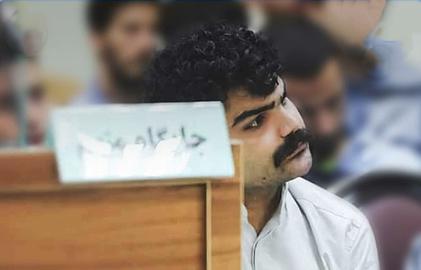Woman, Life, Freedom: An Archive of Defiance is a collection of art works created during the Iranian uprising sparked by the murder Mahsa Amini in police custody in September last year.
This archive has been curated by two scholars of Iranian descent in Canada and presents works in various fields of art, including dance, animation, graffiti, painting, photography and music, which were created around the world by Iranians and non-Iranians who empathized with Iranian women.
Shahrzad Mojab, a professor with the University of Toronto, and writer and researcher Afsaneh Hojabri started collecting and documenting hundreds of art works from the very early weeks of nationwide protests.
Shortly after the outbreak of the demonstrations, many artworks were created in support of the “Woman, Life, Freedom” movement. Hundreds of artworks by young and unknown artists in Iran, many of whom did not reveal their names over fear of reprisal, were heard and seen around the world.
"An artistic ‘Explosion’ and Uprising that Expressed Rage, Defiance, Protest"
The website of An Archive of Defiance says it gathers "selected visual materials representing ‘Woman, Life, Freedom’" and intends to "create an aesthetically inspired resource for transnational feminist revolutionary pedagogy.”
“This archive is named after the defiance and the uprising of Iranian women that started with the state murder of Mahsa. Following that, we witnessed an artistic ‘explosion’ and an uprising that expressed rage, defiance, protest, demands for justice and freedom and everything that was expressed in the slogan ‘Woman, Life, Freedom’,” Mojab tells IranWire. She is a professor at the Women and Gender Studies Institute and the Ontario Institute for Studies in Education at the University of Toronto.
“It dawned on me how important it is for students, academics, activists and artist who want to learn about this uprising to also pay attention to its artistic aspects,” Mojab adds. “This archive, a collection of works created in the first 100 days of the uprising in seven artistic fields such as music, dance, graffiti, writing slogans, installations and visual arts including photography, painting and illustrations, expresses the demands of this movement.”
An Archive for History
An Archive of Defiance is the result of six months of navigation and search through popular media platforms such as Twitter, TikTok, WhatsApp, Instagram, Telegram, and YouTube. On each platform, researchers identified several active accounts and followed them on a daily basis. They also extensively used hashtags in English, Persian and Kurdish. Each entry in the archive is identified by group, subgroup, publication date, place and, when available, the work’s and the artist’s names.
The song “Baraye…” (“For…”) by Shervin Hajipour "is one of the hundreds of music pieces in the archive," says Shahrzad Mojab. “There are also many good critiques of this song that we have added as a supplement to show how important it is to intellectually and dynamically engage with these artworks.”
“This archive was only possible by taking great care and with our enthusiasm for this movement. We did not want to just provide links. We wanted to have the originals of the artworks so that history would remember them. This is a very important concept in building an archive. Preserving the collective history and the collective memory is important.”
"Iranian Women's Rage Has Become Transnational"
Some of the artworks in the archive have been seen millions of times by Iranians and non-Iranians and shared extensively. They have attracted a lot of attention in the academia as well.
Mojab points out that the responses have been positive and “it is very important and interesting to see response to these works.”
Which of the works in this archive does she believe is closest to the spirit of anti-government protests in Iran? “There is a series of animations in the archive that say a lot even though they are very short. In the video section, Khodanour’s dance and works about this crime by the government that murdered an honorable and oppressed person like Khodanour impressed me a lot. I have used it a lot and will do so again."
Khodanour Lajai was an Baluch protester who loved dancing and who was killed around the “Bloody Friday” massacre in the south-eastern city of Zahedan in September. While he was detained and tied to a pole, members of the Revolutionary Guards placed a bottle of water in front of him but he could not reach it. A picture of this scene became one of the symbols of the nationwide protests and captured the world’s attention.
“This archive has also recorded international responses to the uprising in Iran in various artistic forms, including public performances, dances, music, sculptures and installations in various streets around the world,” Mojab says. “This shows that, without a doubt, this uprising has had a global impact. It is an uprising that originated in the rage and defiance of women. This rage and defiance has become transnational and has shaken the foundations a patriarchal and theocratic system that has taken over women’s bodies and women’s freedom.”
According to Mojab, this archive has so far included only works that need no translation or description of cultural concepts, but the plan is to expand the entries: “Up to now, we have had very exact criteria for choosing and introducing artworks. We tried to choose works that do not need translations and descriptions of cultural concepts but, little by little, we are working on works that need translation.”
An Archive of Defiance is open to everyone and whoever wants to use it can do so. If an artist has created a work that he wants to be included in this archive or if an artist finds one of his works in the archive and wants to add information about it, he can contact Mojab by email.





























comments